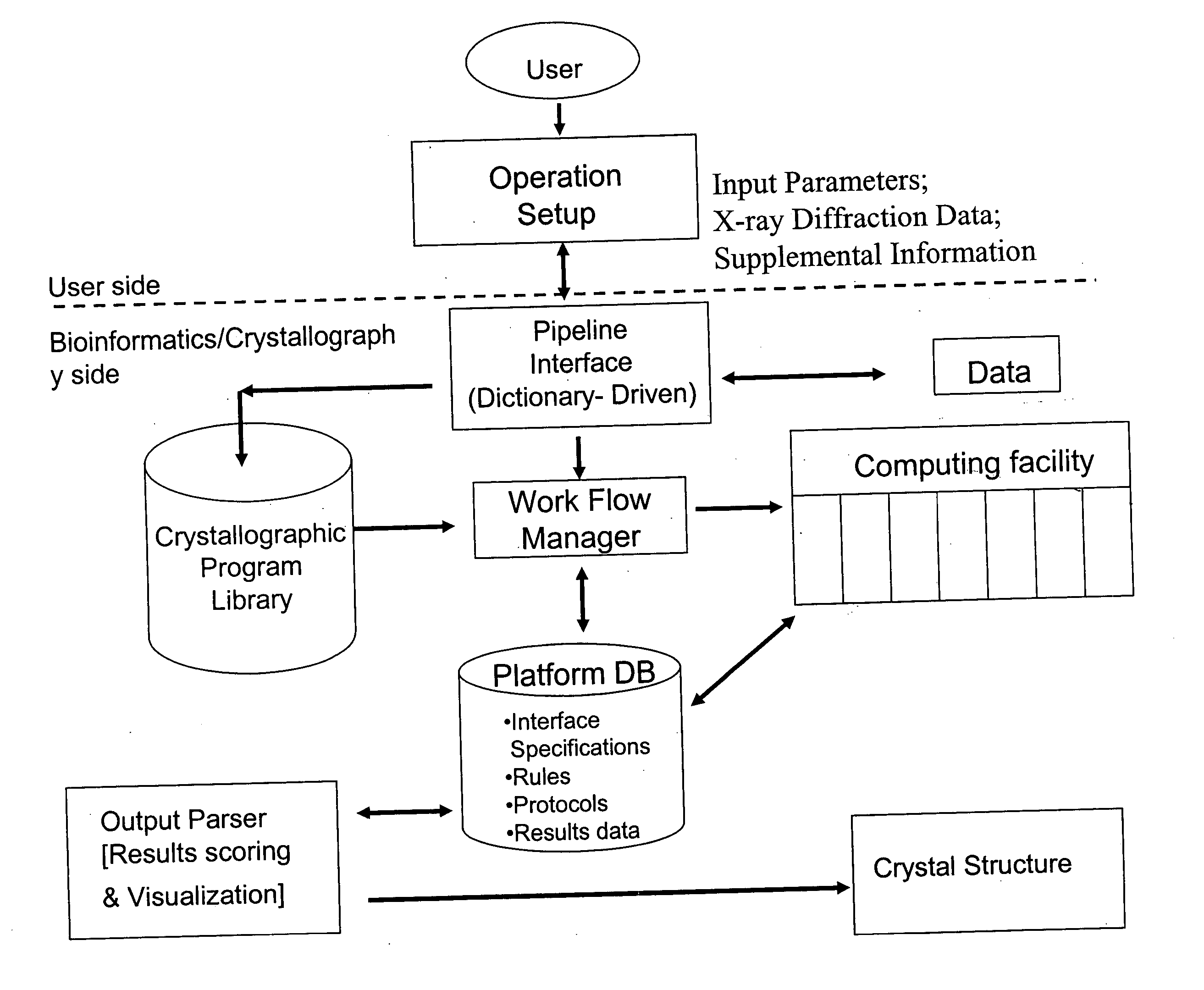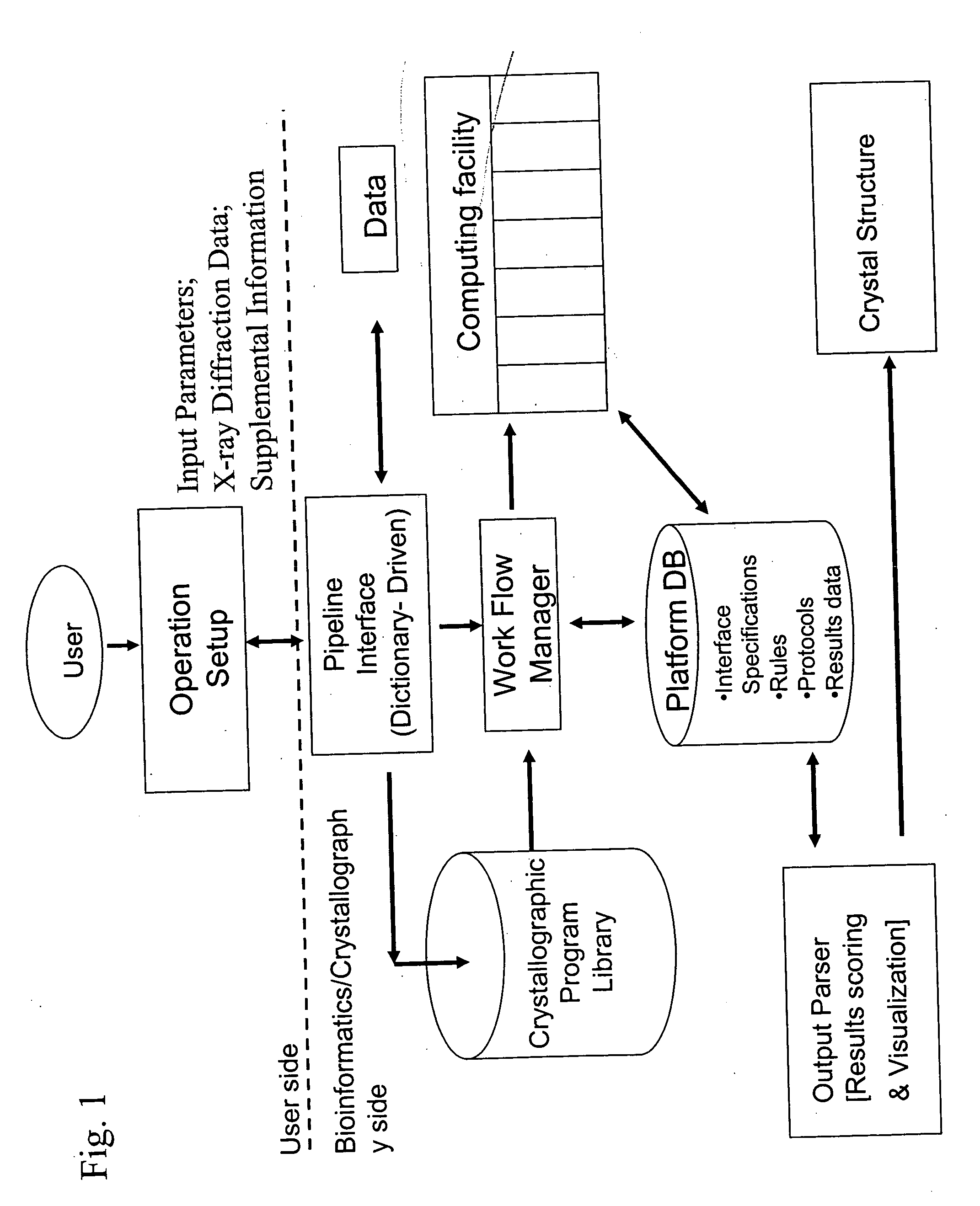High-throughput methods for determining electron density distributions and structures of crystals
a crystal structure and electron density technology, applied in the field of x-ray crystallography, can solve the problems of insufficient structure factors alone to determine the electron density distribution, inability to provide essential phase information, and often limited phase estimates to an incomplete set, so as to improve signal-to-noise ratio, accurate electron density distribution and molecular models, and efficient organization of large amount of inpu
- Summary
- Abstract
- Description
- Claims
- Application Information
AI Technical Summary
Benefits of technology
Problems solved by technology
Method used
Image
Examples
example 1
Determining Protein and Peptide Crystal Structures Using Single wavelength and Multiple Wavelength Anomalous Scattering Techniques
[0092] The methods of the present invention were used to determine electron density distributions and crystal structures of proteins, peptides and complexes of these using phase information derived from anomalous scattering observed in the X-ray diffraction data. The results of these studies indicate that the present methods increase the success rate of structure solving by taking advantage of parallel structure calculations using modular computational pipelines which explore a much larger parameter space than is feasible with manual job submission-based crystallographic methods. Structure solutions to proteins and peptides have been obtained in several cases where conventional, manual submission crystallography approaches have failed.
1.a. Introduction
[0093] Owing to the continued improvements in hardware, software and experimental techniques over the...
example 2
Determining Protein Crystal Structures Using Molecular Replacement Techniques
[0141] The methods of the present invention were also used to determine electron density distributions and crystal structures of proteins using phase information derived from reference structures. The results of these studies indicate that the present methods increase the success rate of structure solving by taking advantage of parallel structure calculations using modular computational pipelines which explore a much larger parameter space than is searched using conventional crystallographic methods.
[0142] The structure of Pfu-1862794, a 28.8 KDa recombinant protein from Pyrococcus furiosus, was determined using the AMOREpipe computational pipeline. This pipeline comprised a plurality of analysis modules capable of calculating electron density distributions and crystal structures using molecular replacement methods, and was designed and implemented on a Bioperl pipeline based platform. X-ray diffraction d...
example 3
High-Throughput Protein-to-Structure Pipeline
[0145] The present methods provide a high-throughput platform for determining structures and electron density distribution or biomolecules. The present methods are accurate, versatile and compatible with automation Therefore, high-throughput methods of the present invention provide a particularly attractive and robust route for determining a wide range structures, such as protein and peptide structures, that is capable of effective scale-up.
3.a. Introduction
[0146] A high throughput protein-to-structure pipeline has been developed by the crystallography core. It integrates robotics and other automation technologies into three modules that interact closely: crystallization, crystallomics (target salvaging) and structure determination / validation. Relational databases provide the backend for communication between these relatively independent modules. While extensive experience with the pipeline confirm the significance of automation, we ...
PUM
 Login to View More
Login to View More Abstract
Description
Claims
Application Information
 Login to View More
Login to View More - R&D
- Intellectual Property
- Life Sciences
- Materials
- Tech Scout
- Unparalleled Data Quality
- Higher Quality Content
- 60% Fewer Hallucinations
Browse by: Latest US Patents, China's latest patents, Technical Efficacy Thesaurus, Application Domain, Technology Topic, Popular Technical Reports.
© 2025 PatSnap. All rights reserved.Legal|Privacy policy|Modern Slavery Act Transparency Statement|Sitemap|About US| Contact US: help@patsnap.com



